
Back Gòtic col·legial Catalan Gótico colegial Spanish Architettura gotica collegiale Italian Коллегиальная готика Russian 学院哥特式建筑 Chinese
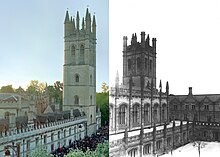
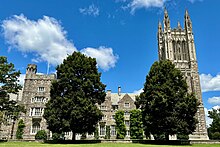
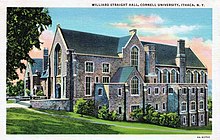
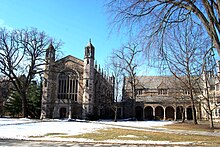

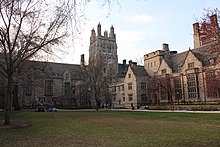

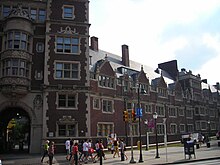
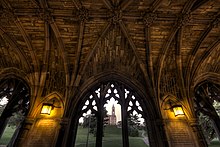


Collegiate Gothic is an architectural style subgenre of Gothic Revival architecture, popular in the late-19th and early-20th centuries for college and high school buildings in the United States and Canada, and to a certain extent Europe. A form of historicist architecture, it took its inspiration from English Tudor and Gothic buildings. It has returned in the 21st century in the form of prominent new buildings at schools and universities including Cornell, Princeton, Vanderbilt, Washington University, and Yale.[1][2]
Ralph Adams Cram, arguably the leading Gothic Revival architect and theoretician in the early 20th century, wrote about the appeal of the Gothic for educational facilities in his book The Gothic Quest: "Through architecture and its allied arts we have the power to bend men and sway them as few have who depended on the spoken word. It is for us, as part of our duty as our highest privilege to act...for spreading what is true."[3]
- ^ "College campuses are constructing buildings that look like they're straight out of Harry Potter's world". Los Angeles Times. 2017-12-21. Retrieved 2023-02-03.
- ^ "Brookings Hall". Washington University in St. Louis. Retrieved 2023-02-03.
- ^ Slipek, Edwin J. Jr., Ralph Adams Cram, The University of Richmond and the Gothic Style Today, Marsh Art Gallery, University of Richmond, 1997 p. 19